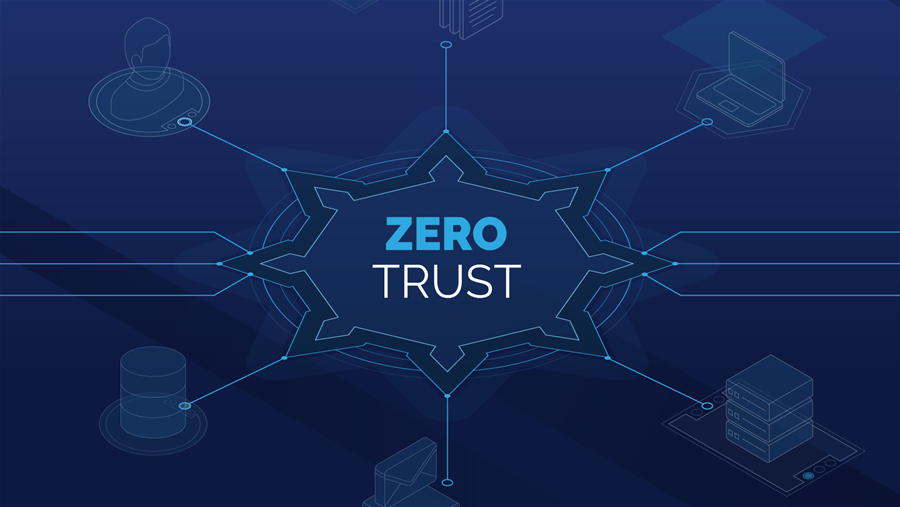Abstract- Beside cryptography algorithms which are based on the upper layers of protocol stack to ensure confidentiality in communication systems, the idea of physical layer security (PLS) in wireless network systems dates back to (in) 1970s. In the past decade, this idea has been studied by many researchers from all around the world. Initially, this method required that the source-destination channel is better than source-eavesdropper channel. However, current advances in technology, especially with the help of relay and beamforming technique the PLS problem is now possible even though the above channel condition is not met. For wireless relay networks, there are two main relaying schemes often employed for physical layer security Decode-and-Forward (DF) and Amplify-and-Forward (AF). In this paper, we present the state-of-the-art of both these techniques in physical layer security and some future research directions related to them.
|
Tài liệu tham khảo [1] Bloch, M., Barros, J. “Physical-layer Security: From Information Theory to security Engineering”, Cambridge University Press (2011). [2] Boyd, S., Vandenberghe, L “Convex optimization. Cambridge”, U.K. Cambridge Press (2004). [3] Charnes, A., Cooper, W.W. “Programming with linear fractional functionals”. In: Naval Res. Logist. Quart, vol. 9, pp. 181–186 (Dec 1962). [4] Csiszár, Korner, J.: Broadcast channels with confidential messages. IEEE Trans. Inf. Theory 24(3), 339–348 (May 1978). [5] Dong, L., Han, Z., Petropulu, A., Poor, H.: Improving wireless physical layer security via cooperating relays. IEEE Trans. Signal Process 58(3), 1875–1888 (March 2010). [6] Dong, L., Han, Z., Petropulu, A., Poor, H. “Amplify-andforward based cooperation for secure wireless communications”. In Acoustics, Speech and Signal Processing, 2009. ICASSP 2009. IEEE International Conference on. pp. 2613–2616 (April 2009). [7] G. Zheng, K. Wong, A.P., Ottersten, B. “Collaborativerelay beamforming with perfect csi Optimum and distributed implementation”. IEEE Trans. Signal Process Letters 16(4) (Apr 2009). [8] G. Zheng, K. Wong, A.P., Ottersten, B. “Robust collaborative-relay beamforming”. IEEE Trans. on Signal Proc 57(8) (Aug 2009). [9] Golub, G., Loan, C.F.V. “Matrix Computations “(3rd ed).Johns Hopkins University Press (1996). [10] Jing, Y., Jafarkhani, H. “Network beamforming using relays with perfect channel information”. Information Theory, IEEE Transactions on 55(6), 2499–2517 (June 2009). [11] Jorswieck, E., Wolf, A., Gerbracht, S. “Secrecy on the Physical Layer in Wireless Networks”, ch. 20. INTECH (2010). [12] Khisti, A. “Algorithms and architectures for multiuser, multiterminal, and multilayer information theoretic security”. Ph.D. thesis, MIT (2008). [13] Khisti, A., Wornell, G.W. “Secure transmission with multiple antennas: The misome wiretap channel”. IEEE Trans. Inf. theory (Aug 2007). [14] Le Thi, H.A. “DC Programming and DCA”. //www.lita.univlorraine.fr/ lethi/ [15] Lei Wang, Yue-ming Cai, L.Z., Yang, W. “Secrecy throughput of miso single-eavesdropper ropper networks with imperfect channel state information”. Electronics Letters (15), pp. 1169–1170 (June 2015). [16] Leung-Yan-Cheong, S.K., Hellman, M.E. “The Gaussian wire-tap channel”. IEEE Trans. Inform. theory. Vol. 24(4), pp. 451–456 (July 1978). [17] Li, J., Petropulu, A., Weber, S. “On cooperative relaying schemes for wireless physical layer security”. IEEE Trans. Signal Process Vol. 59(10), pp. 4985–4997 (October 2011). [18] Li, Z., Trappe, W., Yates, R. “Secrete Communication via Multi-antenna Transmission”. In: 41st Annual Conference on Information Sciences and Systems (CISS). pp. 905–910 (2007). [19] Liu, R., Poor, H.V. “Secrecy capacity region of a multiantenna Gaussian broadcast channel with confidential messages”. IEEE Trans. Inform. theory. vol. 55(3), pp. 1235–1249 (Jun 2009). [20] Lun Dong, Z.H., Petropulu, A., Poor, H.V. “Secure wireless communication via cooperation”. In Proc. 46th Annual Allerton Commun., Control, and Computing, Monticello, IL (Sept 2008). [21] Muhammad Fainan Hanif, M.J., Tran, L.N. “Antenna selection with erroneous convaiance matrices under secrecy constraint”. IEEE Transactions on Vehicular Technology (2015). [22] Oggier, F., Hassibi, B. “The secrecy capacity of the MIMO wiretap channel”. IEEE Trans. Inf. theory (Oct 2007). [23] P. K. Gopala, L.L., Gamal, H.E. “On the secrecy capacity of fading channels”. IEEE Trans. Inform. Theory vol. 54(10), pp. 4687–4698 (Oct 2008). [24] Pham Dinh, T., Le Thi, H.A.: Convex analysis approach to DC programming: Theory, algorithms and applications. Acta Mathematica Vietnamica 22(1), 289–357 (1997). [25] R. Liu, I. Maric, P.S., Yates, R.D. “Discrete memoryless interference and broadcast channels with confidential messages: Secrecy capacity regions”. IEEE Trans. Inform. theory. vol. 54(6), pp. 2493–2507 (Jun 2008). [26] Shafiee, S., Ulukus, S. “Achievable rates in gaussian miso channels with secrecy constraints”. In: Information Theory, 2007. ISIT 2007. IEEE International Symposium on. pp. 2466–2470 (June 2007). [27] Siddhartha Sarma, S.A., Kuri, J. “Secure Communication in Amplify-and-Forward Networks with Multiple Eavesdroppers: Decoding with SNR Thresholds”. In: Wireless Pers Commun, Springer New York (2015). [28] Sonee, A., Hodtani, G.A. “On the secrecy rate region of multiple-access wiretap channel with noncausal side informatiion”. IEEE Transactions on infromation forensics and security (6). 2015. [29] Sturm, J.: Using sedumi 1.02: A matlab toolbox for optimization over symmetric cones., opt. methods and software. Special issue on Interior Point Methods 11-12, pp. 625–653 (1999). [30] Tekin, E., Yener, A. “The general gaussian multipole access and two-way wire-tap channels: Achievable rates and cooperative jamming”. Information Theory, IEEE Transactions on 54(6), 2735–2751 (Jun 2008). [31] Tran Thi Thuy, Nguyen Nhu Tuan, L.T.H.A., Gely, A. “DC programming and DCA for enhancing physical via relay beamforming strategies”. In: Lecture Note in Computer Science LNCS, Springer (March 2016). [32] Tuan, N.N., Son, D.V.: DC programming and DCA for Enhancing Physical Layer Security in Amplify-andForward Relay Beamforming Networks Based on the SNR Approach. In: Advances in Intelligent Systems and Computing, Springer International Publishing. pp. 23-33 (June 2017). [33] V. Nassab, S. Shahbazpanahi, A.G., Luo, Z.Q. “Distributed beamforming for relay networks based on second order statistics of the channel state information””. IEEE Trans. On Signal Proc 56(9), 4306–4316 (Sept 2008). [34] Vishwakarma, S., Chockalingam, A. “Decode-and-forward relay beamforming for security with finite-alphabet input”. IEEE Communication Letters 17(5) (May 2013). [35] Wyner, A.D. “The wire-tap channel”. Bell Sys. Tech. Journ. 54, 1355–1387 (1975). [36] Y. Liang, H.V.P., Shamai, S. “Secure communication over fading channels”. IEEE Trans. Inform. Theory 54, pp. 2470– 2492 (June 2008). [37] Y. Yang, Q. Li, W.K.M.J.G., Ching, P. “Cooperative Secure Beamforming for AF Relay Networks With Multiple Eavesdroppers”. In: IEEE Signal Processing Letters. vol. 20, pp. 35–38 (2013). [38] Z. Q. Luo, W. K. Ma, A.M.C.S.Y.Y., Zhang, S. “Semidefinite relaxatiion of quadratic optimization problems”. In: IEEE Signal Processing Mag.,. vol. 27, pp. 20–34 (May 2010). [39] Zhang, J., Gursoy, M. “Collaborative relay beamforming for secrecy”. In: Communications (ICC), 2010 IEEE International Conference on. pp. 1–5 (May 2010). |
Nguyễn Như Tuấn, Đặng Vũ Sơn, Nguyễn Ngọc Cương

09:00 | 21/12/2016

11:00 | 07/01/2021

10:00 | 12/11/2019

16:00 | 10/10/2017

09:00 | 16/01/2018

16:00 | 29/12/2020

15:00 | 13/08/2011

10:00 | 25/10/2024
Triết lý an ninh mạng Zero Trust đặt ra nguyên tắc không có bất kỳ người dùng nào trong hoặc ngoài hệ thống mạng đủ tin tưởng mà không cần thông qua sự kiểm tra chặt chẽ về danh tính. Để triển khai Zero Trust hiệu quả, cần áp dụng các giải pháp công nghệ mạnh mẽ. Bài báo này sẽ trình bày những vấn đề cơ bản về Zero Trust.

13:00 | 01/08/2024
Facebook là trang mạng xã hội thu hút đông đảo người dùng, giúp mọi người kết nối, trao đổi và liên lạc thông tin. Tuy nhiên Facebook cũng trở thành miếng mồi hấp dẫn cho tin tặc với nhiều chiêu trò lừa đảo tinh vi khiến người dùng sập bẫy. Dưới đây là một số lời khuyên đối để bảo vệ tài khoản cá nhân trên Facbook.

09:00 | 13/02/2024
Trong bối cảnh an ninh mạng ngày càng phát triển, các tổ chức liên tục phải đấu tranh với một loạt mối đe dọa trên môi trường mạng ngày càng phức tạp. Các phương pháp an toàn, an ninh mạng truyền thống thường sử dụng các biện pháp bảo vệ thống nhất trên các hệ thống đang tỏ ra kém hiệu quả trước các hình thái tấn công ngày càng đa dạng. Điều này đặt ra một bài toán cần có sự thay đổi mô hình bảo vệ theo hướng chiến lược, phù hợp và hiệu quả hơn thông qua việc Quản lý rủi ro bề mặt tấn công (Attack Surface Risk Management - ASRM).

18:00 | 22/09/2023
Do lưu giữ những thông tin quan trọng nên cơ sở dữ liệu thường nằm trong tầm ngắm của nhiều tin tặc. Ngày nay, các cuộc tấn công liên quan đến cơ sở dữ liệu để đánh cắp hay sửa đổi thông tin càng trở nên khó lường và tinh vi hơn, vì vậy việc quản lý cơ sở dữ liệu đặt ra những yêu cầu mới với các tổ chức, doanh nghiệp. Trong hệ thống phân tán, khi dữ liệu được phân mảnh và phân phối trên các vị trí khác nhau có thể dẫn đến khả năng mất toàn vẹn của dữ liệu. Thông qua sử dụng cây Merkle và công nghệ Blockchain ta có thể xác minh tính toàn vẹn của dữ liệu. Trong bài viết này, nhóm tác giả sẽ trình bày các nghiên cứu về ứng dụng cây Merkle và công nghệ Blockchain để bảo đảm tính toàn vẹn dữ liệu cho cơ sở dữ liệu phân tán, đồng thời đảm bảo hiệu năng của hệ thống.

Trong thời đại ngày nay, cùng với sự phát triển của khoa học kỹ thuật có ngày càng nhiều những cuộc tấn công vào phần cứng và gây ra nhiều hậu quả nghiêm trọng. So với các loại tấn công khác, tấn công qua kênh kề đang được nghiên cứu do khả năng khôi phục lại khóa bí mật trong khi hệ thống vẫn hoạt động bình thường mà không hề làm thay đổi phần cứng. Bài báo này sẽ trình bày một cách sơ lược về những kết quả cuộc tấn công kênh kề lên mã hóa RSA cài đặt trên điện thoại thông minh sử dụng hệ điều hành Android tại Viện Khoa học - Công nghệ mật mã. Nhóm tác giả đã tấn công khôi phục được một phần khóa bí mật của mã hóa RSA cài đặt trên điện thoại thông minh và chứng minh khả năng rò rỉ thông tin qua kênh kề.
14:00 | 11/09/2024

Trong cuộc đua 5G tại Việt Nam, Viettel đã vươn lên dẫn đầu khi trở thành nhà mạng đầu tiên chính thức tuyên bố khai trương mạng 5G. Trong khi đó, các nhà mạng khác cũng đang ráo riết chuẩn bị cho việc triển khai dịch vụ 5G, hứa hẹn một thị trường viễn thông sôi động và cạnh tranh trong thời gian tới.
09:00 | 29/10/2024